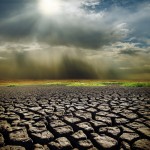
It has been estimated that between 10-26% of men and 10-33% of women experience dry mouth. The subjective sensation of dry mouth is called xerostomia and can be found in people with normal salivary gland function. The normal range of salivary production ranges from 0.5 to 1.5 litres per day. The aim of this Cochrane review was to assess the effects of non-pharmacological interventions administered to stimulate saliva production for the relief of dry mouth.
Searches were conducted in the Cochrane Oral Health Group’s Trials Register, the Cochrane Central Register of Controlled Trials (CENTRAL), Medline, Embase, AMED, CINHAL, CANCERLIT, The metaRegister of Controlled Clinical Trials (www.controlled-trials.com) and ClinicalTrials.gov (www.clinicaltrials.gov) databases. These were supplemented by searching of the reference lists of included studies and relevant reviews. Randomised controlled trials (RCTs) comparing techniques designed or used to stimulate saliva production (such as acupuncture, laser or electrostimulation) with either placebo or with another treatment were included. There were no language restrictions. Standard Cochrane approaches were taken to data extraction, risk of bias assessment and analysis.
- 9 RCTs (total 366 participants) met the inclusion criteria.
- 8 were considered to be at high risk of bias the other of unclear risk
- Acupuncture was evaluated in 5 small studies (153 participants),
- 2 studies contributed to a meta-analysis, which showed no difference between acupuncture and control in dry mouth symptoms (SMD -0.34, 95% CI -0.81 to 0.14, P value 0.17, I2 = 39%) with the confidence intervals including both a possible reduction or a possible increase in dry mouth symptoms.
- Acupuncture was associated with more adverse effects (tiny bruises and tiredness which were mild and temporary).
- 3 trials (71 participants) showed a very small increase in unstimulated whole saliva (UWS) at the end of 4 to 6 weeks of treatment (MD 0.02 ml/minute, 95% CI 0 to 0.04, P value 0.04, I2 = 57%) 2 trials ( 54participants) showed that this benefit was still seen at 12 months(UWS, MD 0.06 ml/minute, 95% CI 0.01 to 0.11, P value 0.03, I2 = 10%).
- For the outcome of stimulated whole saliva (SWS) 3 trials (71 participants) there was a benefit favouring acupuncture (MD 0.19 ml/minute, 95% CI 0.07 to 0.31, P value 0.002, I2 = 1%) which also persisted at the 12-month follow-up evaluation
- 3 studies evaluated electrostimulation devices.None of these studies reported the outcome of dry mouth.
- 2 small studies, both at high risk of bias, compared the use of an electrostimulation device with a placebo device in participants with Sjögren’s Syndrome (total 101 participants).
- One study, compared acupuncture-like electrostimulation of different sets of points in participants who had previously been treated with radiotherapy.
- There was no difference between electrostimulation and placebo in the outcomes of UWS or SWS at the end of the 4- week treatment period in the one study (very low that provided data for these outcomes. No adverse effects were reported.
- A single study at high risk of bias, compared the stimulatory effect of powered versus manual toothbrushing and found no difference for the outcomes of UWS or SWS.
The authors concluded
There is low quality evidence that acupuncture is no different from placebo acupuncture with regard to dry mouth symptoms, which is the most important outcome. This may be because there were insufficient participants included in the two trials to show a possible effect or it may be that there was some benefit due to ’placebo’ acupuncture which could have biased the effect to the null. There is insufficient evidence to determine the effects of electrostimulation devices on dry mouth symptoms. It is well known that dry mouth symptoms may be problematic even when saliva production is increased, yet only two of the trials that evaluated acupuncture reported dry mouth symptoms, a worrying reporting bias. There is some low quality evidence that acupuncture results in a small increase in saliva production in patients with dry mouth following radiotherapy.
There is insufficient evidence to determine the effects of electrostimulation devices on dry mouth symptoms or saliva production in patients with Sjögren’s Syndrome. Reported adverse effects of acupuncture are mild and of short duration, and there were no reported adverse effects from electrostimulation.
Comments
Dry mouth is associated with a difficulty in chewing , speaking swallowing and tasting food as well as well as soreness of the mouth, increased risk of caries and candidiasis. Consequently it can have an important impact on quality of life. As it is common in the elderly population this is likely to have an increasing impact in the future. It is clear from this review and the 2012 Cochrane review by Furness et al that looked at topical therapies for dry mouth that the evidence is very poor in this area and that there is a need for high quality studies to be conducted in this area that include outcomes that more patient focused, as noted by the reviews authors.
Links
Furness S, Bryan G, McMillan R, Worthington HV. Interventions for the management of dry mouth: non-pharmacological interventions. Cochrane Database of Systematic Reviews 2013, Issue 8. Art. No.: CD009603. DOI: 10.1002/14651858.CD009603.pub2.
Furness S, Worthington HV, Bryan G, Birchenough S, McMillan R. Interventions for the management of dry mouth: topical therapies. Cochrane Database of Systematic Reviews 2011, Issue 12. Art. No.: CD008934. DOI: 10.1002/14651858.CD008934.pub2.

[…] Dental Elf – 3rd Sept 2013 – Insufficient evidence for effects of non-pharmacological interv… […]
[…] Insufficient evidence for effects of non-pharmacological interventions for the relief of dry mouth […]